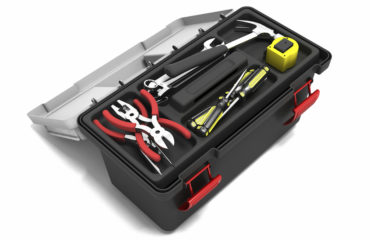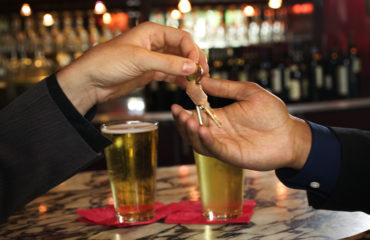2013 National Drug Control Strategy, U.S. Office of National Drug Control Policy, pg. 67“Every year, thousands of fatalities occur in the United States that involve drugged driving. [1] Drugs other than alcohol that can affect driving performance include illicit drugs and medications (prescribed and over-the-counter) with the potential to alter behavior.”
People driving while impaired by drugs other than alcohol have been doing so for years. In the early 1970s, Los Angeles law enforcement officers developed the Drug Recognition Expert (DRE) program to identify drivers that were drugged-impaired.[2] The program has expanded and is now an international endeavor known as the Drug Evaluation and Classification (DEC) Program. Still, even after all these years, the fight to end impaired driving remains heavily focused on alcohol-impaired driving, with far less attention paid to drug-impaired operators. But, times have changed and a broader perspective is required.
Drugged Driving is a Growing Concern
Research demonstrates that drugged driving is a significant problem nationwide. A study conducted by the National Highway Traffic Safety Administration (NHTSA), the 2007 National Roadside Survey of Alcohol and Drug Use by Drivers[3] found that:
- One in eight Americans driving on a weekend night tested positive for an illicit drug.
- Of the 16.3% of drivers who tested positive for drugs, 11.3% were positive for illegal drugs, 3.9% for medications and 1.1% for both illegal drugs and medications. The most common illegal drugs were cannabis (8.6%), cocaine (3.9%) and methamphetamine (1.3%).
A year later, NHTSA released additional research determining that 33% of all deceased drivers with known drug-test results in 2009 tested positive for drugs. This includes illegal substances as well as over-the-counter and prescription medications.[4] While the research did not say that every person who tested positive was impaired, the extent of positive tests is troubling.
People are dying because of drugged driving, and the problem is growing. Recent data also shows that the involvement of drugs in fatal motor vehicle crashes increased by five percentage points over the past five years, even as the overall number of drivers killed declined. [5] Additionally, the 2011 National Survey on Drug Use and Health found an estimated 9.4 million people reported driving under the influence of illegal drugs during the year prior to being surveyed.[6]
Clearly, drugged driving is a significant issue that can’t be left on the side of the road; the problem is not going away. In fact, it is growing. What are we to do?
Working Together We Can Save Lives
Three years ago drugged driving was included as a national priority in the U.S. National Drug Control Strategy. That is still true in 2013, continuing the goal set in 2010 to reduce drugged driving in the United States by 10% by the year 2015. The strategy calls for us to:
- Increase public awareness
- Enhance legal reforms to get drugged drivers off the road
- Advance technology for drug tests and data collection, and
- Increase law enforcement’s ability to identify drugged drivers. [7]
The Office of National Drug Control Policy (ONDCP) and other federal partners[8] have provided a great jumpstart in the effort to end drugged driving, such as NHTSA doing additional research on this topic and NTSB expanding its discussion to substance-impaired driving. But more is needed. It will take every one of us to educate ourselves with the facts. It will require every one of us to take action, whether it is in our own homes, at work, or within the community.
Steps for Action
It will take every one of us to share the message that drugged driving is deadly:
- Parents can and must talk with their children.[9]
- Friends can and must talk to friends.
- Employers can and must educate their workers.
- Doctors can and must interact with their patients and understand the signs of substance-use problems
- Law enforcement officers and prosecutors can and must be trained on the effective identification, arrest, and adjudication of the drugged driver, and
- Public leaders can and must look at the research and understand that proactive legislation can make a difference; they must be willing to discuss this deadly crime in an effort to protect the community.
There is no overnight remedy to this growing scourge. There is no silver bullet that will end it. It will take continued discussion and effort. The first step in this fight is acknowledgement of the problem, and believing that we can make a difference. Like throwing a pebble into a pond, as we influence those around us, they, too, influence those around them, in an ever-increasing circle. On this issue, it is up to every one of us to create a circle that ripples across our communities, our states, and ultimately our country.
[1] Traffic Safety Facts: Drug involvement of fatally injured drivers. National Highway Traffic Safety Administration.(2010) DOT HS 811 415. Washington, DC: U.S. Department of Transportation.
[2] For this article, when using the term “drugged” driving, it includes not only illicit drugs, but also prescription and over the counter medicines.
[3] 2007 National Roadside Survey of Alcohol and Drug Use by Drivers, NHTSA, Department of Transportation, (2009) DOT HS 811 249 Washington DC: U.S. Department of Transportation
[4] Traffic Safety Facts: Drug involvement of fatally injured drivers. National Highway Traffic Safety Administration (2010) DOT HS 811 415. Washington, DC: U.S. Department of Transportation.
[5] Traffic Safety Facts: Drug involvement of fatally injured drivers. National Highway Traffic Safety Administration (2010) DOT HS 811 415. Washington, DC: U.S. Department of Transportation.
[6] Results from the 2011 National Survey on Drug Use and Health: Summary of National Findings, SAMHSA, U.S, Department of Health and Human Services
[7] 2013 National Drug Control Strategy, U.S. Office of National Drug Control Policy, pg. 67
[8] NTSB, CDC, SAMSHA, and NHTSA are a few of the federal agencies that have worked on combating drugged driving alongside of ONDCP. Non-profit organizations, such as MADD, GHSA, NADCP/NCDC, IBH, We Save Lives, and RADD, have also expanded their efforts to include ending drugged driving.
[9] See the ONDCP Tool Kit for parents and community groups to be proactive with teens.








